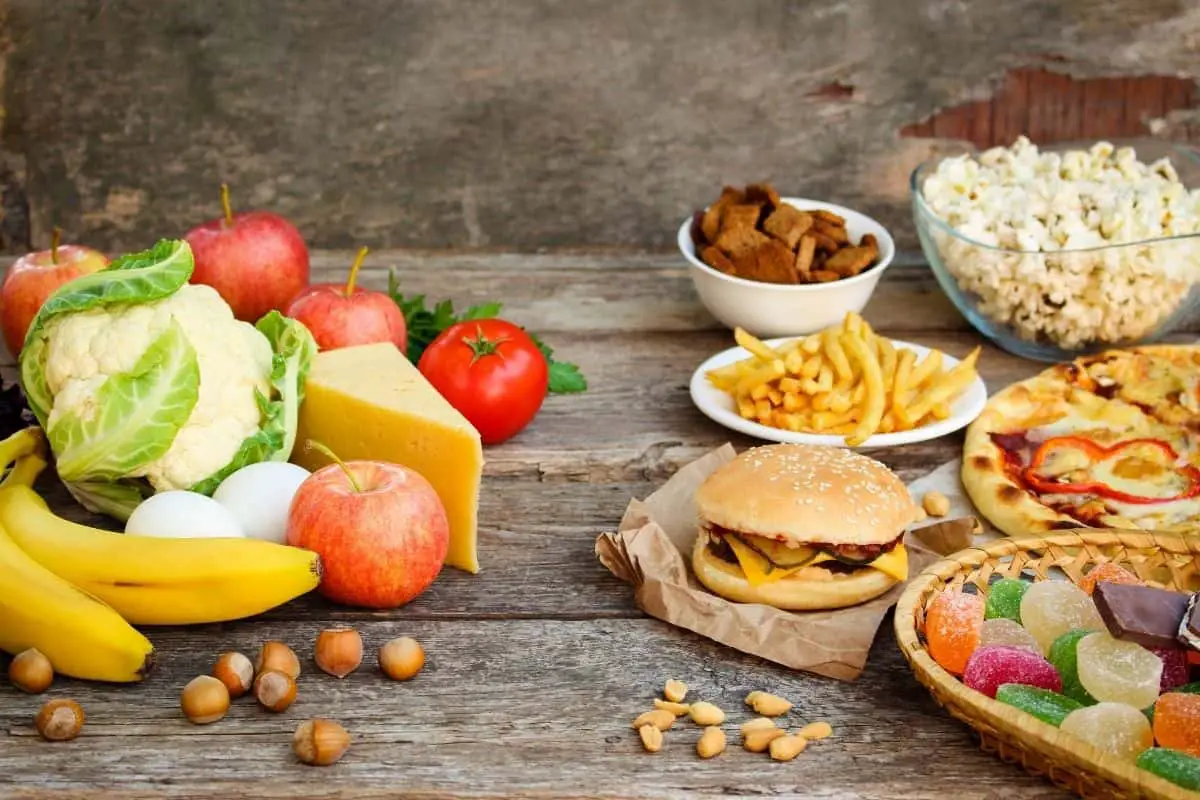What is a food desert & What causes them in the US?
The US is often viewed as a country that’s at the top of its game, the land of plenty… but how true is that really? No doubt you’ve heard someone say or even use the term #FirstWorldProblems on more than one occasion. So, when we think about a shortage of fresh food, including fruits and vegetables we have to be talking about a third world country right?
Nope, not in this case – today we are talking about Food deserts right here in the United States, which are a widespread issue that is rarely talked about. Why? Because America the great likes to portray itself as just that – the fairest in the land. And while there are many perks to living in the US, it is by far a fairytale country. In this post, we will explore what food deserts are, how they affect health, and why it’s so difficult to solve the issue of food deserts in America.
What is a food desert?
So.. What is a food desert exactly? Quite simply put a food desert is an area where fresh whole foods such as fruits, vegetables, dairy, and even meat are few and far between. Food deserts are typically found in low-income areas where access to transportation is limited. Residents of food deserts tend to live on a very small disposable income so calling an uber or taking a cab to travel and purchase fresh food is not always an option. That being said, a Food desert is not synonymous with a low-income area; it may exist in both middle and higher-income areas though it is not as common.
Examples of food deserts include: cities where supermarkets have closed, rural farming towns that lack major grocery stores within driving distance, inner-city neighborhoods without access to fresh fruit or vegetables, and even some suburbs lack access to fresh healthy food. This means people are forced to shop at local dollar stores, convenience stores, and gas stations for most of their meals.
What is considered a food desert?
The U.S. Department of Agriculture defines a food desert as a low-income census area where a considerable share of residents – approximately 33% – that are “more than 1 mile from a supermarket or large grocery in urban areas, and more than 10 miles in rural areas”.
A low-income tract is defined by a poverty rate equal to or greater than 20% of the population or a tract in which the median family income is 80% less than the nearest in-state metropolitan area median family income.
What surprises people most is that even in cities that you would think are both “rich” in food and people you will undoublty find food deserts. In fact, New York City is the largest food desert in the United States with an estimated 750,000 residents being affected. That’s definitely not what comes to mind when we tend to think of NYC. Broadway, fine dining, and a lively, thriving community comes to mind for most.

What causes food deserts?
Food deserts are caused by many factors. Transportation is a significant problem for people in low-income areas because it is less likely for a person living with limited income to own a car or be able to afford public transportation. Going back to NYC think about how many people don’t tend to own a car there, it’s famous for cab rides and those do not come cheap!
Unfortunately, economic instability has pushed grocery stores out of urban areas and into the suburbs. Some people live so far away from a “real” grocery store that it is an entire day’s affair just to get groceries home! Imagine working full time and having to spend an entire day of your weekend just focusing on grocery shopping – yeah, it’s not pleasant. Not to mention there is still the challenge of bringing the groceries home without the items perishing.
In the end, when it comes down to it, the people that live in these food deserts are forced to choose convenience foods over nutritious healthy ones due to this issue.
Socio-economics poses another barrier to people in food deserts accessing healthy food. It is typically in the intersection of race and low income that food deserts arise where disposable income is sparing and is needed for expenses that take priority overproduce and whole foods.
The Supplemental Nutrition Assistance Program (SNAP) has been the American government’s most effective tool against food insecurity and food deserts. But even that offers little access to fresh foods. With almost all convenience stores accepting EBT people are still forced to buy food from them as it still doesn’t solve the transportation issues many face.
What role do Food deserts play in health?
I am sure we don’t need to tell you about the consequences of long-term nutrient deficiency. But, just in case you aren’t aware of what not having access to healthy food does to the body we’ll take a quick look. Lack of proper nutrition is without a doubt the leading cause of “obesity, type 2 diabetes, cardiovascular disease, and other diet-related conditions” in African American, Mexican American, and Asian American communities.
The prevalence of type 2 diabetes has risen among the general demographic recently, however, the greatest increase has occurred within ethnic minorities, which as mentioned are the communities most likely to live in a food desert. Coincidence? We don’t think so!
Researchers have established a strong correlation between inadequate food access and increased diabetes rates. This can be explained by the high-calorie foods dominating shelves in food deserts, putting residents living in these areas at greater risk for diabetes, and making it difficult to manage diabetes once diagnosed.

Why do food deserts exist in the US Why is it so hard to get rid of food deserts?
To contextualize the issue of food deserts, the Plutus Foundation, dates the food desert problem beginning in the 1960s as suburban areas developed. White flight – “the mass migration of white families from urban areas to the suburbs” – caused supermarkets to follow the middle-class white families, leaving urban neighborhoods of color with less and less resources for fresh food over time.
Not to mention the price of fresh produce in the US “increased by nearly 75 percent between 1989 and 2005”, while the price of processed foods dropped by more than 26 percent during that time. While such inflation has strained the food budgets of many families, the higher costs of healthy food make the implementation of a balanced diet and nutrition-focused purchasing for lower-income people unrealistic without humanitarian organization intervention.
Why is it so difficult to solve the issue of food deserts?
Solving the food desert issue is not as simple as inviting a grocery store into the neighborhood. It is economically disadvantageous for businesses to open in low-income neighborhoods, and a move very few grocery store owners are willing to make. “There’s increased cost for opening up a business in areas without a lot of existing investments in those communities” because it is harder to receive loans and there are higher insurance rates, said Sociology researcher Dr. Jarrett Thibodeaux to CNBC.
Furthermore, a new study, “The Geography of Poverty and Nutrition: Food Deserts and Food Choices Across the United States,” developed by economists from New York University, Stanford University, and the University of Chicago, confirms that resolving the food desert issue is not as simple as bringing grocery stores into food desert areas.
According to the study, the most significant influences in nutritional outcomes are not solely due to a communities geographic proximity to sufficient grocery stores, but from “deeper, more fundamental differences in income and, especially, in education and nutritional knowledge, which shape our eating habits and in turn impact our health.” Solutions to food deserts must consider this wide array of factors.
How can we help improve food deserts and increase access to healthy foods?
Fortunately, awareness regarding food deserts and their potential harm has increased recently, thanks to organized efforts like Michelle Obama’s Let’s Move! Campaign which aims to promote healthy lifestyle habits for children and physical activity. However, alleviating the issue entirely requires action from multiple angles.
A pivotal endeavor in reducing food deserts is public education in proper nutrition. The internet is a fantastic resource for information on nutrition, which many already have access to. It is a matter of having individuals in food deserts asking these questions. Many take the initiative to educate themselves on a balanced diet, but there are many who simply have too much on their plate (in this case – figuratively) to make nutrition education a priority. Schools, communities, and medical centers are therefore encouraged to incorporate nutrition education in their services.
Successful examples of education efforts include the Expanded Food and Nutrition Education Program (EFNEP) with the USDA’s National Institute on Food and Agriculture. The data shows that the program has helped people “improve their diets, improve their nutrition practices, stretch their food dollars further, handle food more safely, and increase their physical activity levels.” SNAP-Ed is another educational resource that helps individuals understand the benefits of healthy eating and also helps SNAP recipients make the most use of their funds. Locations for state programs can be found on the State SNAP-Ed Programs page.
Eating unhealthily can be inevitable at times for everyone, therefore forming a habit of regular practice of exercise can help maintain and/or improve the health of individuals in food deserts, and it’s free! The U.S. Department of Health and Human Services notes that physical activity can help individuals “control their weight, reduce fat, relieve stress, and more”. Exercising can help a person to manage their diagnosed diabetes as well.

There are also many programs and resources helping those in poverty find food. Small financial incentive programs for grocers increased the use of SNAP benefits in participating farmers’ markets – resulting in increased access to healthy foods. Food banks and pantries are helpful in providing nutritious food to those who are living in food deserts. Feeding America is a great resource for helping individuals discover a local food bank near them. For those who may not be able to travel to food banks, there are Meals on Wheels and Food Rescue US which deliver healthy food to peoples’ homes.
The Centers for Disease Control and Prevention (CDC) provides several initiatives that can help individuals in food deserts increase their access to healthy foods. For example, healthier food retail (HFR) initiatives, creates “new food retail outlets that sell healthier foods; improving the quality, variety, and amount of healthier foods and beverages at existing stores; or promoting and marketing healthier foods and beverages to the consumer.” The CDC is also developing transportation options to specifically bring people to grocery stores, and development support for mobile healthy food retailers.
Food Deserts are a widespread issue that is rarely talked about. Here we are in the 21st Century when really, it should be a non-issue.
Food deserts in the United States are a troublesome and demanding issue that requires a social and economically analytical response from multiple stakeholders. If only it was a matter of inviting grocery stores to food insecure areas, expanding public transportation, or giving individuals more income and education. Luckily, there is already praise to offer the organizations which have begun to address food deserts in a well-rounded way.
Our country’s food deserts have gone from being a problem to an American crisis. The United States has made strides in improving food access, but we still have a long way to go. We should be doing more for our population that doesn’t live near grocery stores or farmers’ markets. For example, one solution would be making fresh fruit and vegetables accessible through community gardens like the ones found at schools across the country. It’s an easy fix with huge benefits! Let us know how you think this problem can best be solved by leaving your thoughts in the comments below!








